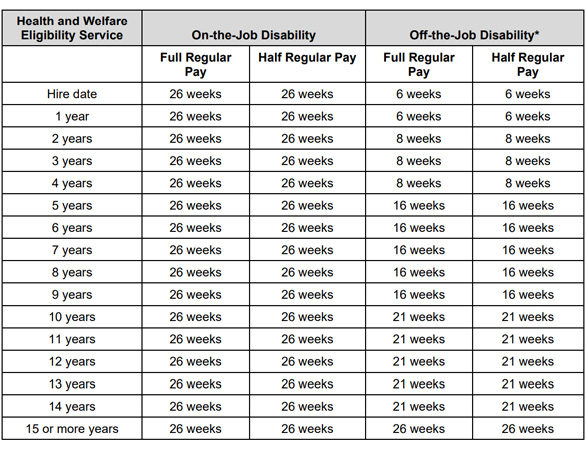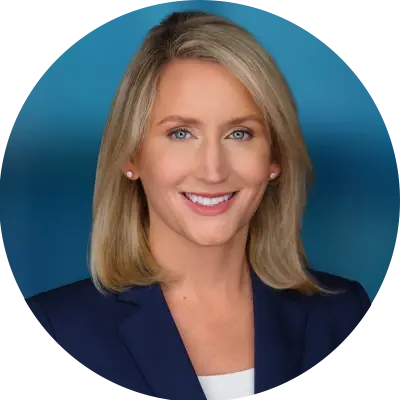In a recent discussion with one of my Chevron clients, I asked him if he had boat insurance. Confused, he said, “Of course not, I don’t own a boat.” It makes sense, right? He didn’t see the need for insurance because there was no risk to insure. Surprisingly, this simple relationship of risk to insurance coverage is misunderstood by many individuals, especially as it relates to the Life & Disability Insurance options offered to Chevron employees each year during Open Enrollment.
In this article, we’ll provide an overview of the following benefits and how to decide which elections are right for you:
- Short-Term Disability
- Long-Term Disability
- Long-Term Disability Restoration Plan
When is Chevron's Open Enrollment Period?
Let’s start at square one – when can you adjust your benefit elections? At Chevron, Open Enrollment starts October 20th-31st, 2025, to make your new elections outside of qualifying events.
What are the Disability Insurance Options Available During Open Enrollment at Chevron?
Many individuals focus on the medical plan options Chevron offers, but the various disability insurance decisions come with a lot of choices to make to ensure that you and your family are protected in the case of an unforeseen event. The benefits we’ll focus on in this article are:
- Short Term Disability
- Basic Long-Term Disability
- Optional Long-Term Disability
- Long-Term Disability (Restoration Plan)
Short-Term Disability – Eligibility & Coverage
As a Chevron employee, you are automatically enrolled in short-term disability coverage from the company at no cost to you. While every employee is automatically enrolled in the coverage, the employee must have completed six months of continuous service before they can use the short-term disability benefit. This disability insurance covers both on-the-job coverage if you were to get hurt while working, and off-the-job situations.
Chevron offers two categories of off-the-job coverage:
- Bonding Benefits for maternity or paternity leave, and
- Family Care for time off to care for a family member.
Short Term Disability – Payment & Time
If you become disabled while at Chevron, the company will provide up to 52 weeks of Short-Term Disability coverage, if you’re eligible. The maximum benefit you can receive is 100% pay for 26 weeks plus an additional 26 weeks at 50% pay, equaling a total coverage period of 52 weeks. However, your years of service with the company and the nature of your leave determine your eligibility for how many weeks and how much you’re paid during those weeks. 
Let’s look at an example to illustrate how Chevron calculates a short-term disability benefit. Suppose that Maximus has worked at Chevron for 12 years. He and his wife, Fiona, have their first child, Ginger, so Maximus decides to take Paternity Leave. Given his tenure at Chevron and the nature of his leave (off-the-job), Maximus can expect to receive his regular pay for 21 weeks, plus an additional 21 weeks at 50% pay.
So, what happens if your injury extends beyond your short-term disability coverage?
One conversation we frequently have with Chevron employees as they weigh their disability coverage options is what to do if there’s a gap between when Short-Term Disability ends and Long-Term Disability starts.
If you have less than 5 years of service – if you look at the chart outlining the short-term disability benefits, anyone with fewer than 5 years of service only receives up to 16 weeks of benefits. Long-term disability benefits wouldn’t start until 180 days after the onset of the disability, leaving a gap in coverage. Most employees won’t purchase additional short-term disability coverage, so ensuring you have the right amount of cash reserves to cover any unpaid gaps can provide peace of mind. Additionally, the cost of coverage can change in these plans from time to time, so before making any decisions, you’ll want to contact the HR Service Center or refer to your annual open enrollment materials for the most up-to-date plan costs.
Long-Term Disability – Eligibility & Coverage
As a Chevron employee, you are automatically enrolled in Basic Long-Term Disability Coverage at no cost to you. The Basic Long-Term Disability (LTD) coverage Chevron provides is, in essence, a continuation of the Short-Term Disability (STD) coverage.
You qualify for Basic Long-Term Disability coverage for the first 24 months of becoming disabled if:
- An injury or illness prevents you from performing the material and substantial duties of your usual occupation at Chevron (or another job at Chevron for which you’re reasonably trained, qualified, or experienced).
After receiving benefits from Chevron’s Basic Long-Term Disability plan for 24 months, you’re eligible to continue benefits only if you meet ALL of the following criteria:
- You’re unable to perform the duties of any gainful occupation (including self-employment) for which you’re qualified — or may reasonably become qualified because of your education, training, or experience (whether or not such a job is available).
- You’re receiving Social Security disability benefits — or have applied for benefits
- You’re under the care of a doctor or licensed physician.
Basic Long-Term Disability begins either 180 calendar days after your disability or the date your Short-Term Disability benefits run out, whichever is later.
How Much Income Do Long-Term Disability Benefits Provide?
Unlike Short-Term Disability, where portions of the coverage could cover the full 100% of an employee’s typical pay, the Basic Long-Term Disability coverage from Chevron only covers up to 50% of annualized regular (base) pay, up to specified limits set by the Internal Revenue Code (IRC) each year.
In 2025, the limit was $350,000. Therefore, the maximum amount of coverage you may receive under basic Long-Term Disability in 2025 is the lesser of either 50% of your base pay, or $175,000 (50% * $350,000) for the year.
Purchasing Optional Long-Term Disability Coverage
For high-income earners, this may be concerning. Suppose your typical income is $400,000 a year, and you suddenly become disabled and unable to work. Falling to an annualized income of $175,00 a year while on disability can be a major lifestyle adjustment that comes with hard conversations and decisions. However, as a Chevron employee, you can purchase additional coverage under Chevron’s LTD plan to supplement up to 60% of your income, up to the IRC limit. While it may not get you up to 100% of your typical pay, every bit helps.
Long-Term Disability Restoration Plan
Let’s suppose you’re a high-income earner who makes well over the Internal Revenue Code’s annual limit for the year before becoming disabled. Chevron offers these high-income employees a way to supplement some of this income through the Long-Term Disability Restoration Plan.
If you are enrolled in the Optional Coverage in the long-term disability plan and your annualized base pay exceeds the IRC income limits for the year, you qualify to enroll in Chevron’s Long-Term Disability Restoration Plan. If you choose to enroll in this plan, you pay for coverage through after-tax payroll deductions.
This Restoration Plan can pay disability benefits of up to 60 percent of your annualized regular pay, from the Internal Revenue Code compensation limit ($350,000 in 2025) up to $500,000.
Let’s return to our example if you make $400,000 a year before becoming disabled.
The Basic Long-Term Disability coverage from Chevron supplements up to 50% of the first $350,000 of your income, totaling $175,000. However, if you purchased additional coverage under the basic long-term disability plan, you can supplement up to 60% of your income, which would increase your annual pay to $210,000.
By adding on the Restoration Plan coverage, you can cover up to 60% of the difference between your annual take-home pay ($400,000) and the annual IRC limit ($350,000). Of the $50,000 gap, the restoration plan coverage would supplement an additional $30,000 of income bringing your new annual total to $240,000.
This plan can be hugely beneficial under the right circumstances, but as I mentioned earlier, the costs for coverage premiums do change regularly. It’s important to run the math with a fiduciary financial advisor who can help you determine if these elections are right for your circumstances.
Do You Need Additional Long-Term Disability Coverage?
If you get injured during your working years, it seems like purchasing long-term disability insurance is a must. However, depending on where you’re at in your career and what you’ve saved, it may be a more nuanced decision.
Let’s take a look at an employee named Steve’s financial situation when he gets injured. He and his wife weren’t planning on retiring for another 10-15 years and are still financially dependent on Steve's income from Chevron or disability insurance to cover their expenses. For Steve, purchasing long-term disability makes sense despite its up-front costs.
However, let’s consider another example. If another injured Chevron employee, whom we’ll call Ryan, is 63 and financially independent by the time he reaches long-term disability eligibility, it may not make sense for him to have additional long-term disability insurance. The premium costs of long-term disability insurance are high. As someone who’s already financially independent, the company-provided benefits and Ryan’s savings may cover the gap between his income and eliminate the need for long-term disability insurance coverage.
Work with a Fiduciary Financial Advisor to Assess Your Insurance Needs
Insurance is an important part of financial planning, and making the proper elections for coverage during your Annual Enrollment period is crucial. The right amount of insurance coverage can help protect you from financial loss in the event of an unexpected event, such as an accident. However, while ensuring you're correctly handling all these pieces may seem daunting, you don't have to do it alone.
Unlike other firms, we don't sell insurance, so we can focus on finding the right plans and amounts needed for our clients without any conflicts of interest. As a Registered Investment Advisory firm (RIA), we're held to the fiduciary standard to work in our client's best interest and make insurance recommendations based on individual needs and goals. At Willis Johnson and Associates, we believe that insurance should be part of a comprehensive financial plan. Our firm focuses on comprehensive financial planning and ensuring that strategies like evaluating insurance gaps are correctly executed to help our clients reach their financial goals. We work with our clients to assess their individual needs and goals, and then develop a customized plan that includes insurance as one of the key components.
At WJA, we look at all your financial pieces to ensure nothing gets overlooked or left on the table. Working with a financial advisor is a beneficial way to determine if this or other tax-efficient savings strategies can help you reach your long-term goals. Start the conversation with an advisor today.







